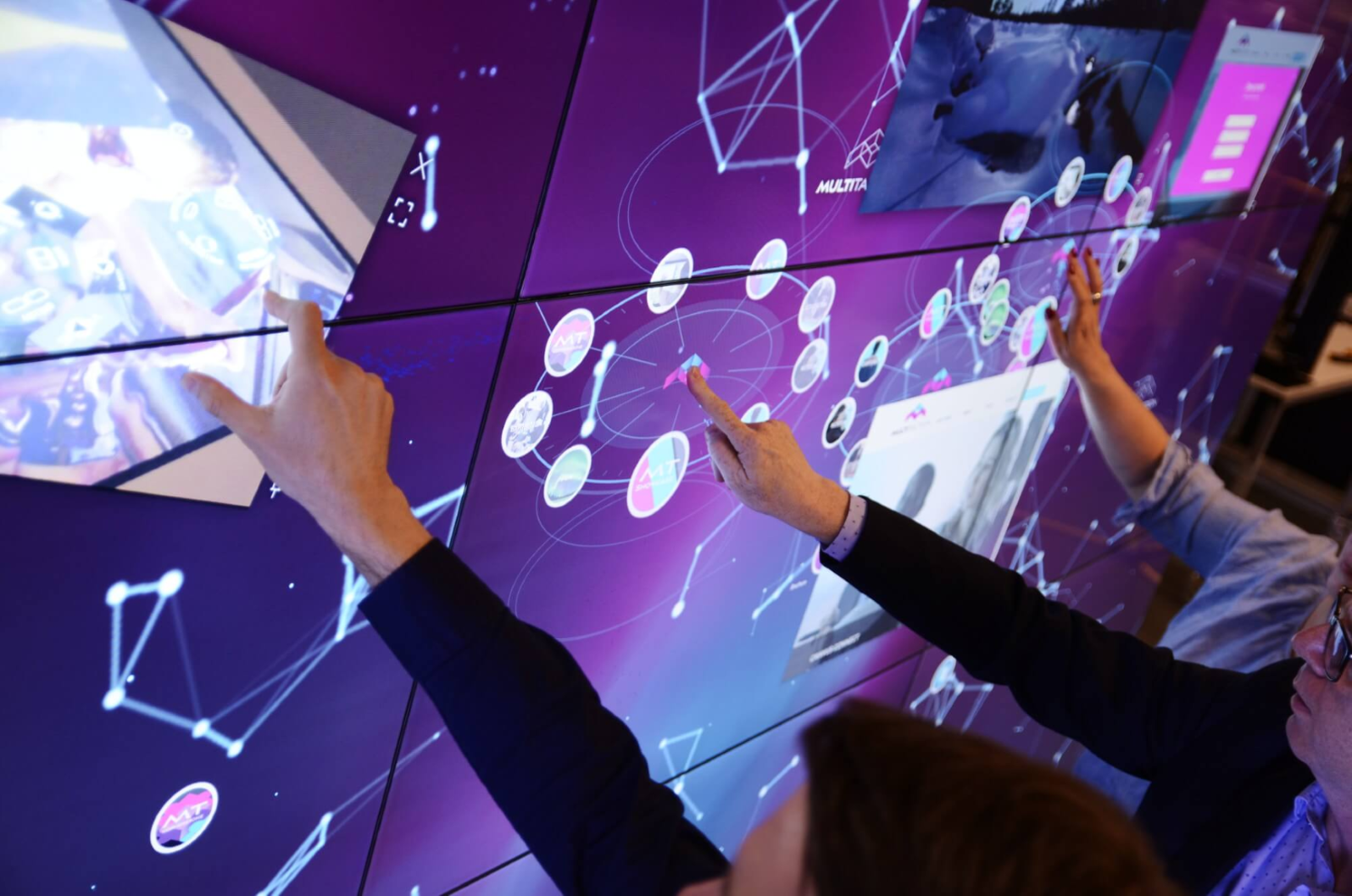Versatility in AV design
Lessons learned from Executive Briefing Centers inform AV design for multi-use and collaborative spaces across market sectors.
Executive Briefing Centers can often be thought of as storytelling, experiential museums and collaborative environments for some of the world’s most iconic and globally recognized brands. Interactive displays allow clients to explore new products and services, while collaborative multi-use environments serve as spaces for pivotal partnership discussions. Because Executive Briefing Centers (EBCs) put cutting-edge AV design on full display, they are, for the AV designer, technically challenging, creatively inspiring, and provide invaluable “lessons learned” to take across market sectors.
Technology design to support aesthetics
By understanding how spaces are used, how other subsystems interface with technology, and how AV components fit into an environment, we can preserve aesthetics, ergonomics, and usability. In EBCs, aesthetics and functionality are equally important and these clients are typically the first to deploy technology-driven environments, while carefully considering every aspect of architectural, environmental, and lighting design.
“Our challenge as audiovisual designers is to capture our clients’ needs while simultaneously understanding the way they truly use the space,” said Scott Simpson, Associate, PAE. “We have to find the perfect mix of solutions to match the functionality, user experience, and diversity of uses. These spaces vary and flow into each other. A casual cup of coffee in a lounge area can turn into a brainstorming session, a video conference, or BYOD collaboration. We have to support the versatility with usability and creativity every step of the way.”
Product manufacturers are recognizing and responding to the need for aesthetically pleasing solutions. For example, speakers conform to the form factor and size of downlights, which can be paint matched in the factory and blend into architectural elements, or plenum enclosures to hide short throw projectors in ceilings, or tables with imbedded video and multitouch.
User experience and user interface
User interfaces and the ways in which people access technology can have a huge impact on a user’s perception of the entire audiovisual system. The systems we use to control technology within the spaces are often confusing or inconsistent across one space to another within one campus or enterprise. When designing EBCs, large teams often have user experience (UX), user interface (UI), and graphic designers develop interfaces to conform to the comfort level and familiar branding that a user-base needs. Unfortunately, the user interface design for control systems in offices and schools is often left to programmers with limited UX or UI design experience.
“During project brainstorming sessions with end users, I often hear stories of negative experiences with tedious or confusing technology design, along with a request to keep the technology simple.” Scott says. “Any bad experience can lead to avoiding a control system all together, opting instead for a lack of integration. This can mean solutions are left behind that could ultimately make life easier, more efficient, or forego an integration that works well with the other systems in the room like lighting and shades.”
Scott and his team help address these reservations with a thorough needs analysis. The process begins with a discussion with stakeholders and end-users where PAE identifies technical comfort level and needs. Input from client discovery informs PAE’s technology team’s designs where simplicity, resiliency, and ease of use are always considered throughout the process. For example, when specifying a control system, requirements for power management, network design, and system redundancy are all detailed. Touch panel interfaces are specified to be consistent and recognizable across an entire campus or enterprise. The client is involved at every step including UI mock-ups to be provided by the control systems programmer, which are then to be approved by the client. End-user training by the integrator is an essential part of the project close-out including handoffs of maintenance and service documentation in a graphical format that's intuitive and simple to access.
What's next?
With rapidly changing technology, it is more important than ever that systems are designed with scalability and versatility in mind. By conducting in-house research and applying the lessons learned with each project, PAE’s technology design team hopes to close the design gap between EBCs and other market sectors.
| Technology | Feature | Benefit | |
|---|---|---|---|
 |
Wireless BYOD (Bring Your Own Device) Presentations | Brand/OS-agnostic, device sensing, and ready to present when you are | Quick and spontaneous collaborative meetings |
 |
Seamless Video Conferencing | Hands-free, touch panel-free huddle and conference rooms with automatic power up and input changes | Walk into any conference room, open your laptop, and begin a video conference instantly just as you would from your desk |
 |
RFID and Facial Recognition | Custom wayfinding and custom-curated content to be presented as anyone moves through a space | Personalized experiences at every step; Custom user preferences are automatically loaded in any room |
 |
IOT and Occupancy, Depth, Temperature, and Proximity Sensors | Sensors embedded throughout buildings can provide data for predictive, learning control systems | Potential to eliminate user interfaces / panels completely; Routine tasks begin to become expected and cued up |
 |
VR Collaboration and Design Tools | Platforms that allow multiple people to collaborate inside a single virtual model from any location or device | Design within the model itself; Instantly determine site lines, ADA clearances; Designers in different cities can work together as if they are in the same room |



